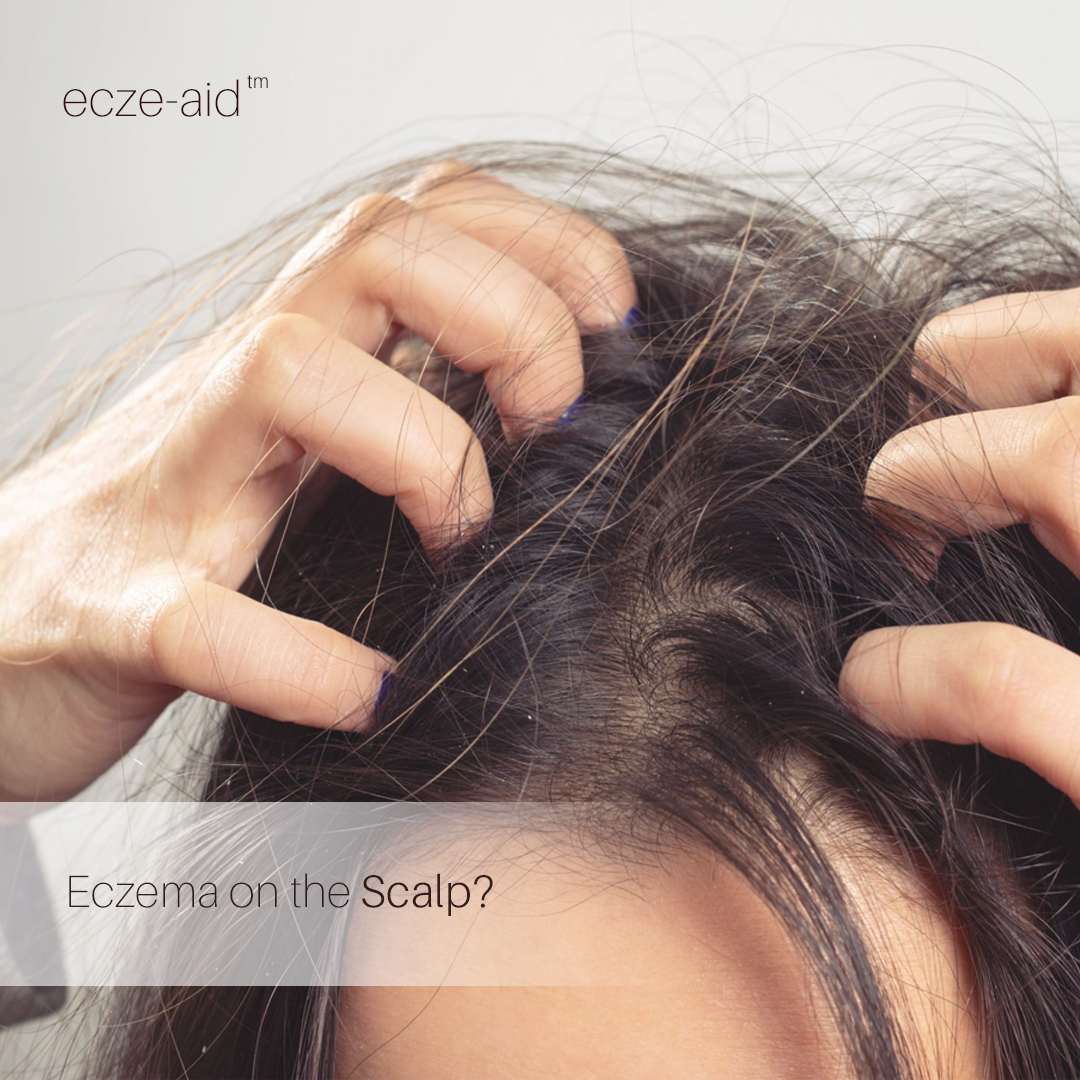Dandruff is just one of the symptoms of scalp eczema. Whereas, scalp eczema usually causes patches of skin to become red, flaky, and itchy, besides producing dandruff. Until today, the exact causes of scalp eczema is unknown, but genes, hormones, illness, and stress are some popularly claimed triggers to scalp eczema in some people [slightly more men are affected than women].
Besides eczema, there are various reasons causing the scalp to feel dry and itchy such as psoriasis, fungal infection, ringworm, head lice etc, and thus, it would be better to get a firm diagnosis if you are unsure about it. Scalp Eczema can appear in different forms such as atopic dermatitis [AD], contact dermatitis and seborrheic dermatitis. However, a person may have more than one condition of eczema at the same time.
Identifying the Different Types of Scalp Eczema
- Seborrheic Eczema
It is the most common form of eczema which usually appear on the scalp and hairline and most likely to occur in babies [also known as “cradle cap” or “crib cap”], as well as children and adults. The affected scalp usually turns red and scaly and it comes with dandruff which varies depending on the severeness of the condition. Rash may appear on the face [eg, around the eyebrows, eyelids and sides of the nose]. In some cases, seborrheic eczema can become infected. During the chronic phase, you will feel the itch and scaly patches on your scalp. Once its progresses to the acute phase, the affected scalp will be painful and inflamed [also known as an eczema flare ups].
- Atopic Dermatitis [AD]
Although AD usually appear on other areas of the body, it can also appear on the scalp. AD has similar symptoms with seborrheic dermatitis [the affected areas may also ooze and weep]. Usually, the skin of the affected area will be red, dry and itchy and it is prone to infection, especially if scratched or when there is broken skin.
- Allergic and Irritant Contact Dermatitis
When your scalp is allergic to a particular substance [e.g., haircare products such as shampoo, conditioners, gels, sprays, hair dyes, or haircare accessories such as bathing cap, hair nets, hair clips, head gears, especially nickel or rubber], it can cause allergic contact dermatitis on the scalp. The allergen causes reaction of immune system that present itself as eczema on the scalp. Meanwhile, irritant contact dermatitis occurs when the surface of scalp is irritated by a substance [e.g., haircare products or fragrances] resulting in dry, red and itchy scalp.
Some Of These Steps Can Help Manage The Symptoms Of Scalp Eczema:
- Apply moisturizing creams
As it’s hard to get beyond the hair to the scalp, moisturizing creams or spray-on oils can be applied to the scalp by parting the hair and massaging them into the skin. Medical emollients in lotion, gel and spray-on oil forms may be suitable. Coconut oil is another option [comes in a solid form that melts at skin temperature]. Alternatively, non-fragranced mineral oil [baby oil] is recommended. You can use a cotton turban or shower cap to keep the moisturizing cream or oil in overnight and rinse it off in the morning. If the scalp is very scaly, you may use a salicylic acid and tar preparation in similar way and let it sits for at least 4 hours. However, leaving it overnight will be more effective.
Caution: Ointment is inappropriate as it is difficult to rinse. Olive oil is not recommended as it has been found to damage the skin barrier.
- Avoid Haircare Products that Contain Irritants
If you have dry and itchy scalp, shampoos and conditioners containing detergents and fragrance are likely to aggravate the irritation further. You may use water with the optional addition of bicarbonate of soda mixed into a thin paste or an emollient bath oil as a substitute. Make sure your hair dryer is on cool settings [as hot air increases dryness and itching]. There are also anti-yeast shampoos [containing selenium sulphide or zinc pyrithione] which is formulated to reduce the yeast element and flaking in seborrheic dermatitis of the scalp, and normally used once a week, as an ongoing preventative measure for adult seborrheic dermatitis.
Caution: Besides seborrheic dermatitis, anti-yeast shampoos are not recommended for other types of eczema.
- Treating Flare Ups with Topical Creams
During the acute stage of scalp eczema, you can use similar methods like how you treat eczema on other areas of your body. However, try treating the scalp [not the hair] by parting your hair and massage treatments onto your scalp. There is certain prescribed topical steroids designed for use on the scalp. You ought to be careful, as some of them contain alcohol which can cause stinging on the affected scalp. Thus, lotion, mousse or gel preparation may be a more suitable option. For scaly and inflamed scalp, topical steroids combined with salicylic acid can be helpful. However, if scalp eczema is infected, you may need prescribed oral antibiotics.
Usually, topical steroids are only prescribed for short-term use, usually not more than 2 weeks [due to some adverse effects for long-term use] and may be too potent for a young child. Hence, it would be best to use non-steroid-base eczema treatment cream and lotion for treatment, especially for babies and young children.

